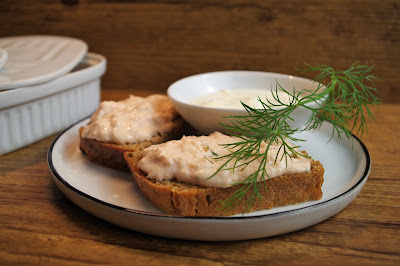 Nut ring
Nut ring
I recently came across this nut ring with the beautiful name "guðnýjar" by chance and the recipe sounded so delicious, I had to try it for New Year's!
Happy New Year everyone - don't worry!
 Ingredients
Ingredients100 g ground hazelnuts
100 g ground almonds
4 egg whites
200 g brown sugar
1 Tbsp oil
100 g block chocolate
30 g butter
1 Tbsp chopped hazelnuts
1 Tbsp almond flakes
Preparation
Preheat the oven to 350 °F (180 °C) upper/lower heat.
Beat the egg whites with the sugar until stiff.
Fold in the ground nuts and almonds.
Grease a suitable springform pan (approx. 20 or 22 cm in diameter) with the vegetable oil, ...
...put the dough into the mold...
...and bake in a preheated oven at 350 °F (180 °C) for about 25 minutes until the dough is cooked through.
Allow the nut ring to cool thoroughly in the tin, then carefully remove it from the baking tin.
Melt the chocolate with the butter in a water bath and spread it on the nut ring.
Mix the chopped hazelnuts with the almond flakes...
...and sprinkle the still wet chocolate icing on top.
Let the whole thing dry thoroughly and then serve.
Happy New Year!!!
[Translated from here.]























































